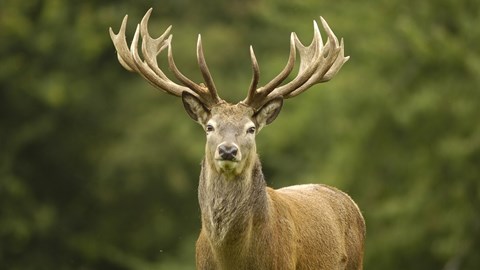First Day Cover: Red Deer (Cervus elaphus), White-tailed Eagle (Haliaeetus al (Croatia 1993)
Red Deer (Cervus elaphus), White-tailed Eagle (Haliaeetus al (Croatia 1993)
23 February (Croatia ) within release Croatian fauna (II) - Kopacki Rit goes into circulation First Day Cover Red Deer (Cervus elaphus), White-tailed Eagle (Haliaeetus al face value 1050 Croatian dinar
| First Day Cover Red Deer (Cervus elaphus), White-tailed Eagle (Haliaeetus al in catalogues | |
|---|---|
| Croatian post Inc.: | Cro:HR FDC 5/1993 |
First Day Cover is square format.
Also in the issue Croatian fauna (II) - Kopacki Rit:
- Stamp - Red Deer (Cervus elaphus) face value 500;
- First Day Cover - Red Deer (Cervus elaphus), White-tailed Eagle (Haliaeetus al face value 1050;
First Day Cover Red Deer (Cervus elaphus), White-tailed Eagle (Haliaeetus al it reflects the thematic directions:
Birds (Aves), a subgroup of Reptiles, are the last living examples of Dinosaurs. They are a group of endothermic vertebrates, characterised by feathers, toothless beaked jaws, the laying of hard-shelled eggs, a high metabolic rate, a four-chambered heart, and a strong yet lightweight skeleton. Birds live worldwide and range in size from the 5 cm (2 in) bee hummingbird to the 2.75 m (9 ft) ostrich. They rank as the class of tetrapods with the most living species, at approximately ten thousand, with more than half of these being passerines, sometimes known as perching birds. Birds are the closest living relatives of crocodilians.
Birds of prey or predatory birds, also known as raptors, are hypercarnivorous bird species that actively hunt and feed on other vertebrates (mainly mammals, reptiles and smaller birds). In addition to speed and strength, these predators have keen eyesight for detecting prey from a distance or during flight, strong feet with sharp talons for grasping or killing prey, and powerful, curved beaks for tearing off flesh. Although predatory birds primarily hunt live prey, many species (such as fish eagles, vultures and condors) also scavenge and eat carrion
Eagle is the common name for the golden eagle, bald eagle, and other birds of prey in the family Accipitridae. Eagles belong to several groups of genera, some of which are closely related. True eagles comprise the genus Aquila. Most of the 68 species of eagles are from Eurasia and Africa. Outside this area, just 14 species can be found—two in North America, nine in Central and South America, and three in Australia.
Animals are multicellular, eukaryotic organisms of the kingdom Animalia (also called Metazoa). All animals are motile, meaning they can move spontaneously and independently, at some point in their lives. Their body plan eventually becomes fixed as they develop, although some undergo a process of metamorphosis later on in their lives. All animals are heterotrophs: they must ingest other organisms or their products for sustenance.
A deer (pl.: deer) or true deer is a hoofed ruminant ungulate of the family Cervidae. It is divided into subfamilies Cervinae (which includes, among others, muntjac, elk (wapiti), red deer, and fallow deer) and Capreolinae (which includes, among others reindeer (caribou), white-tailed deer, roe deer, and moose). Male deer of almost all species (except the water deer), as well as female reindeer, grow and shed new antlers each year. These antlers are bony extensions of the skull and are often used for combat between males.





